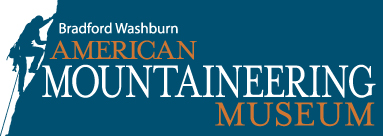The Schoening Axe

The famed Schoening Ice Axe. Courtesy of the Washington State Historical Society
Fred Poyner, of the Washington State Historical Society, inspects the axe after removing it from the shipping crate.
Next, Museum Director Niña Johnson has a look.
The installation team from Quatrefoil positions the axe within its secure case, as the director looks on.
The position is marked and the axe is ready to be installed.
On December 5, 2007, the Bradford Washburn American Mountaineering Museum took delivery of one of the most historic artifacts in the world of mountaineering – the Schoening ice axe. The axe was used to save the lives of five men, and has come to represent the pinnacle of mountaineering ethics. The axe will be on loan from the Washington State Historical Society.
The year 1953 was a great one for mountaineering. By its end, the summit of
A storm on the Abruzzi Ridge—25,000 feet up on the slopes of K2—sent climbers led by Charles Houston, a doctor from
The youngest and strongest man on this expedition team, however, would keep this expedition from being remembered solely for its tragedies. Moments after Gilkey, still in his sleeping bag, and the other five men began sliding to their deaths, a chemist from Seattle, Pete Schoening, instinctually jammed his ice axe behind a boulder— an impromptu rope belay, with the rope wrapped around his hip and the wooden shaft of the axe—and instantaneously arrested five men from hurtling to their deaths.
Unfortunately, Gilkey would later be swept into the void by an avalanche. Still, Schoening’s simple yet life-altering act has since defined the expedition: “The Belay” is now recognized as one of the most heroic acts in all of mountaineering history.
The
The five lives that dangled from Schoening’s ice axe so far away in
Schoening was not just a heroic mountaineer, however. He was a pioneering one as well. He led the first ascents of
But it was that day in August of 1953 that has become the classic mountaineering tale and a symbol for many of alpine ethics at its best: friendship between climbing partners had prevailed above all other considerations. As was later recounted in the book K2: The Savage Mountain, it was upon the cold, precipitous slopes of one of the world's wildest mountains, with hypoxia-challenged minds their only aid for survival, that these mountaineers felt as though they had reached "the core of life itself."






















